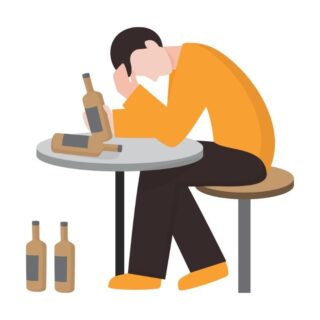Addiction
Support Line
Online Schedule
Addiction
The use of substance varies across a spectrum and may range from low risk use on one had to addiction on the other. Low risk use can be understood as the consumption of a substance in amounts that are not physically and psychosocially hazardous. Hazardous use (at-risk) is characterized by its potential to cause negative health consequence however these consequences should not have occurred yet. When the substance has caused negative health consequences, it is called harmful substance use. Addiction is differentiated from the aforementioned patterns. It is a chronic condition characterized by frequent relapses, strong drive to take the drug despite adverse consequences, loss of control over drug use and emergence of an unpleasant state during abstinence. It is primarily a disease of the brain and does not merely reflect lack of determination or character or failure of will.
How do I know if I have dependence on a particular drug?
Dependence to a substance occurs after its sustained use. The individual experiences difficulty in controlling its intake, and when they try to abstain from the use of the substance it leads to craving often manifested as physical and psychological distress coupled with an irresistible urge to use the substance again. After a period of continued use of the substance, a given dose of the drug produces decreased effects and consequently larger doses are needed to obtain the effect originally attained from the lower does, a phenomenon known as tolerance. With progressive use the individual’s pleasure gets confined to the use of the substance often leading to dissatisfaction and increasing neglect of any alternative forms of pleasure. However, they persist in using the substance despite the knowledge of the detrimental consequences of its prolonged use. Overall, such dependence can be demonstrated to various psychotropic substances like alcohol, tobacco, cannabis, opioids, stimulants to name a few.















